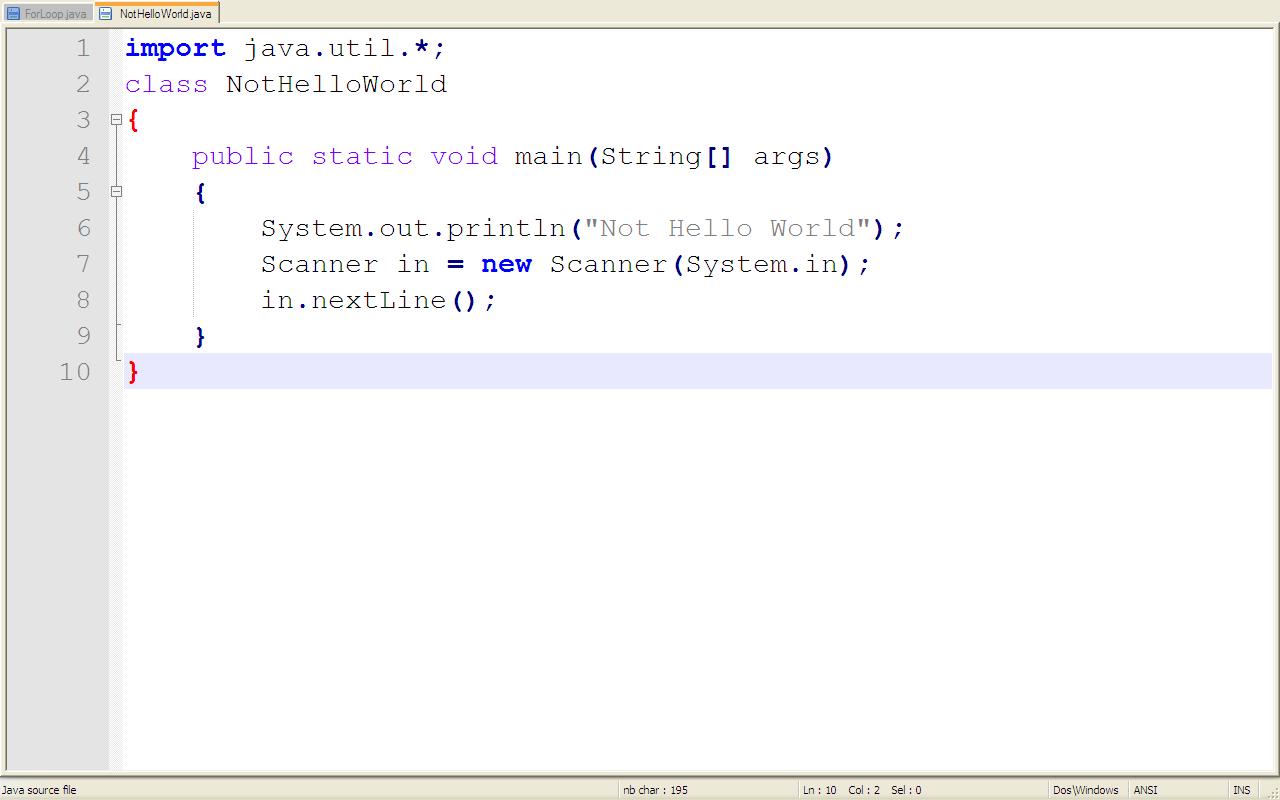Sorry this answer sucks, but you can't launch an just any external application via a click, as this would be a serious security issue, this functionality isn't available in HTML or javascript. Think of just launching cmd.exe with args.you want to launch WinMerge with arguments, but you can see the security problems introduced by allowing this for anything. The only possibly viable exception I can think of would be a protocol handler (since these are explicitly defined handlers), like winmerge://, though the best way to pass 2 file parameters I'm not sure of, if it's an option it's worth looking into, but I'm not sure what you are or are not allowed to do to the client, so this may be a non-starter solution.

It's time to write your first application! The following instructions are for users of Windows Vista, Windows 7, and Windows 8. Instructions for other platforms are in and. If you encounter problems with the instructions on this page, consult the. A Checklist To write your first program, you'll need:.

For older versions of windows, click the start button, then go to All Programs>Accessories>Command Prompt. Once you have it open, go to the file destination of the.java file. Then, type, 'dir', it will bring up everything in the directory. Since notepad is a plain text editor, it can be used to virtually write any program - from Java, C++, C, JavaScript, Python scripts, windows batch commands to HTML.
The Java SE Development Kit 8 (JDK 8) You can. (Make sure you download the JDK, not the JRE.) Consult the. A text editor In this example, we'll use Notepad, a simple editor included with the Windows platforms. You can easily adapt these instructions if you use a different text editor. These two items are all you'll need to write your first application.
Creating Your First Application Your first application, HelloWorldApp, will simply display the greeting 'Hello world!' To create this program, you will:.
Create a source file A source file contains code, written in the Java programming language, that you and other programmers can understand. You can use any text editor to create and edit source files. Compile the source file into a.class file The Java programming language compiler ( javac) takes your source file and translates its text into instructions that the Java virtual machine can understand.

The instructions contained within this file are known as bytecodes. Run the program The Java application launcher tool ( java) uses the Java virtual machine to run your application. Create a Source File To create a source file, you have two options:. You can save the file on your computer and avoid a lot of typing. Then, you can go straight to.
Or, you can use the following (longer) instructions. First, start your editor. You can launch the Notepad editor from the Start menu by selecting Programs Accessories Notepad. In a new document, type in the following code.
Note: Type all code, commands, and file names exactly as shown. Both the compiler ( javac) and launcher ( java) are case-sensitive, so you must capitalize consistently. HelloWorldApp is not the same as helloworldapp. Save the code in a file with the name HelloWorldApp.java.
To do this in Notepad, first choose the File Save As menu item. Then, in the Save As dialog box:.
Using the Save in combo box, specify the folder (directory) where you'll save your file. In this example, the directory is myapplication on the C drive. In the File name text field, type 'HelloWorldApp.java', including the quotation marks. From the Save as type combo box, choose Text Documents (.txt).
In the Encoding combo box, leave the encoding as ANSI. When you're finished, the dialog box should look like this. The Save As dialog just before you click Save. Now click Save, and exit Notepad. Compile the Source File into a.class File Bring up a shell, or 'command,' window.
You can do this from the Start menu by choosing Run. And then entering cmd. The shell window should look similar to the following figure.
A shell window. The prompt shows your current directory. When you bring up the prompt, your current directory is usually your home directory for Windows XP (as shown in the preceding figure.
To compile your source file, change your current directory to the directory where your file is located. For example, if your source directory is myapplication on the C drive, type the following command at the prompt and press Enter. Note: To change to a directory on a different drive, you must type an extra command: the name of the drive. For example, to change to the myapplication directory on the D drive, you must enter D:, as follows: C: D: D: cd myapplication D: myapplication If you enter dir at the prompt, you should see your source file, as follows: C: cd myapplication C: myapplication dir Volume in drive C is System Volume Serial Number is F2E8-C8CC Directory of C: myapplication 2014-04-24 01:34 PM. 2014-04-24 01:34 PM. 2014-04-24 01:34 PM 267 HelloWorldApp.java 1 File(s) 267 bytes 2 Dir(s) 93,297,991,680 bytes free C: myapplication Now you are ready to compile. At the prompt, type the following command and press Enter.
How To Run A Program In Visual Studio
Javac HelloWorldApp.java The compiler has generated a bytecode file, HelloWorldApp.class. At the prompt, type dir to see the new file that was generated as follows: C: myapplication javac HelloWorldApp.java C: myapplication dir Volume in drive C is System Volume Serial Number is F2E8-C8CC Directory of C: myapplication 2014-04-24 02:07 PM. 2014-04-24 02:07 PM. 2014-04-24 02:07 PM 432 HelloWorldApp.class 2014-04-24 01:34 PM 267 HelloWorldApp.java 2 File(s) 699 bytes 2 Dir(s) 93,298,032,640 bytes free C: myapplication Now that you have a.class file, you can run your program.
Run Programs From Notepad++
If you encounter problems with the instructions in this step, consult the. Run the Program In the same directory, enter the following command at the prompt.